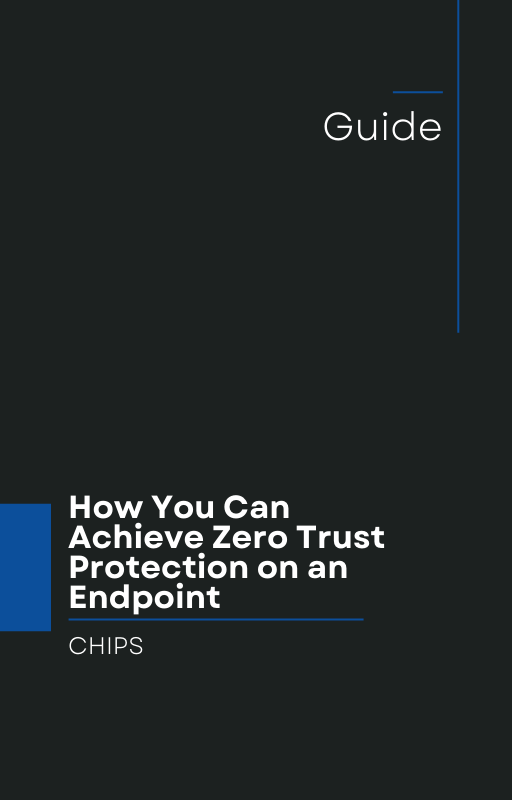In a recent uncovering, researchers exposed a sophisticated new strain of malware using AsyncRAT that operates entirely in memory—never touching disk—allowing it to evade traditional defenses. The attack uses legitimate system tools, scheduled tasks, and obfuscation tactics to maintain persistence and stealth. Cyber Security News
For business leaders and cybersecurity practitioners, this is not just another headline. It’s a warning: relying solely on detection and response is a losing strategy. Threat actors are increasingly using fileless techniques that slip past signature-based antivirus, root out weak spots in security stacks, and stay hidden by operating in memory. Unless we rethink our approach, we’ll always be playing catch-up.
Let’s walk through how this threat works, why it matters, and how AppGuard offers a superior alternative—shifting the paradigm from “detect & respond” to “isolate & contain.”
How AsyncRAT’s Fileless Loader Works
The disclosed attack uses a multi-stage, in-memory loader that avoids writing malicious executables to disk. Here’s a simplified breakdown of the chain:
-
Initial access via stolen or misconfigured legitimate tools
The attackers leveraged a compromised ScreenConnect client as the entry point. -
Script-based payload fetch and in-memory loading
A VBScript (Update.vbs) triggers PowerShell commands to download two payloads (logs.ldkandlogs.ldr) which are placed in a public folder but loaded into memory rather than executed from disk. -
Obfuscator + .NET assembly execution
The first stage (Obfuscator.dll) handles runtime initialization, persistence (via a scheduled task mimicking “Skype Updater”), and anti-analysis techniques. -
AsyncClient.exe as the operational core
The second stage is the RAT itself, establishing command-and-control channels, harvesting system information (including browser extensions and crypto wallets), capturing keystrokes, encrypting data, and more. -
Evasion of key Windows security features
Functions likePatchAMSI()andPatchETW()are used to neutralize script scanning and event-tracing mechanisms.
In short: no files, no alerts—just stealthy control and monitoring.
Why Traditional Defenses Fail
If you’re depending on signature-based antivirus, endpoint detection & response (EDR), or heuristics alone, you’re vulnerable. AsyncRAT’s strategy is tailored to avoid exactly those kinds of defenses:
-
Because the payload never lands as a file on disk, disk-based scanning tools can’t catch it.
-
If evasion code disables AMSI, PowerShell script scanning may be neutralized.
-
Obfuscation and encryption render detection by behavioral patterns very difficult.
-
Even when behavior is anomalous, EDR tools often rely on post-execution analysis — by which time damage is done.
Put simply: detection is too late.
Move From “Detect & Respond” to “Isolate & Contain”
Detection and response are reactive. They assume the attacker will show up and your tools will eventually catch them—and then you’ll respond: kill a process, block an IP, restore a system. But what if the attacker never shows up on your radar?
Isolation and containment, by contrast, prevent malicious activity from spreading or accessing sensitive resources before it hurts you.
Rather than waiting for a trigger, the strategy is to enforce strict controls around which processes can run, what they can access, and who they can talk to. If something anomalous attempts unauthorized actions, you isolate it instantly—and minimize damage.
This is not an academic idea. It’s what modern isolation-based endpoint protection is designed to do—and it’s exactly the philosophy behind AppGuard.
Why AppGuard Is the Right Choice for Enterprises
AppGuard isn’t a new, untested startup. It has over a 10-year track record of blocking advanced threats, used in government and high-security environments before being broadly commercialized. It doesn’t rely on signatures, heuristics, or post-fact detection. Instead, it enforces policy-based isolation and containment where programs run inside controlled “containers” or with restricted privileges. If something attempts to break out, access forbidden memory, or perform malicious actions, it’s contained immediately.
Key advantages include:
-
Policy-driven protection: Define what’s allowed vs. disallowed at a granular level.
-
Memory-level enforcement: Prevents fileless attacks from escalated access.
-
Minimal overhead: Because it’s preventive, it doesn’t need to analyze every behavior in real time.
-
Proven success: Has blocked many advanced attacks over a decade without false positives in many deployments.
With AppGuard, even if AsyncRAT or a similar fileless threat executes in memory, it’s contained—it can’t spread, escalate, or persist.
What This Means for Your Organization
A passive, reactive defense stance is no longer viable. Fileless threats like AsyncRAT are designed to evade detection entirely until they’ve already compromised critical assets.
Business-critical infrastructure, proprietary data, employee systems—they’re all at risk.
Shifting to isolation and containment means you don’t have to wait for “something suspicious” to appear. You define trust boundaries up front and enforce them continuously. Even a zero-day attack has a much lower chance of breaking free when contained.
Because AppGuard has already been battle-tested and now is available commercially, it’s a realistic, powerful upgrade for business protection—not a theoretical ideal.
Call to Action: Move Beyond Detection—Talk to CHIPS About AppGuard
If you're a business owner or security leader, now is the time to act. Don’t wait until an event like the AsyncRAT campaign becomes your crisis. Move from “detect & respond” to “isolate & contain”—and protect your operations proactively.
Talk with us at CHIPS about how AppGuard can prevent fileless, in-memory threats and block ransomware, zero-days, or advanced remote access malware. Let’s design a defense posture that stops threats before they spread.
Contact CHIPS today—and let us help you protect your endpoints the right way.
Like this article? Please share it with others!

October 7, 2025

Comments